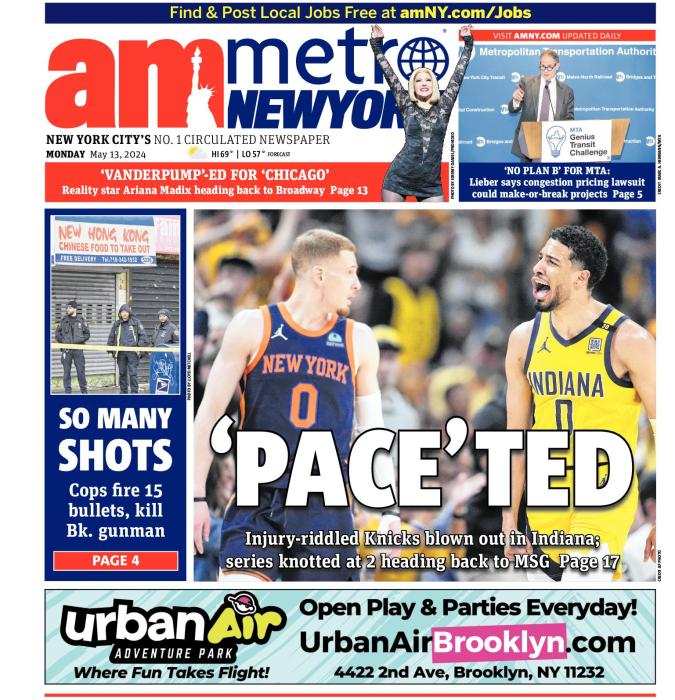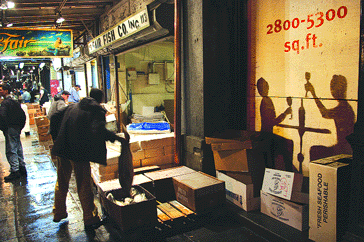By John Ranard
Since 1822, fishmongers gutted and sold fish on the shores of the East River on Manhattan’s South St. The fattest seagulls in the city flew overhead. In the late night open air market wandered wholesale fish buyers, artists, tourists, the occasional gawker, late night beer revelers, and those who liked living in an area that smelled of real life. Robert Rauschenberg rented an attic loft studio nearby.
On the pavement, slippery with fish slime, forklift drivers unloading trucks whizzed about as if working the NASCAR circuit.
The outdoor market is now gone leaving behind empty cobblestone streets and a silence that wakes up one apartment dweller on Peck Slip. “You got used to the din and it lolled you to sleep,” she said. “I still feel a little lonely every morning on my way to work, but I no longer watch where I place my feet. No more dead fish.”
Chalk it up to progress. The new “Fulton Fish Market” in the Bronx is an indoor, high-security, 400,000-square-foot, climate-controlled, efficient, modern facility, absent of the chaos of doing business in the street. If a little New York culture is lost, it is a win-win for real estate.
South St. is now marketed as a high rent luxury district and the new $85-million facility in the Bronx sits where once stood nothing. The fishmongers pay higher rent plus a maintenance fee. It cost $1.5 million a year to refrigerate alone. Wholesale buyers now pay $6 a vehicle to enter.
The rush to homogenize is a little like death and efficiency gets dull. One can expect soon an exhibit of the outdoor fish market occupying a corner of the South Street Seaport Museum and a tour guide reminiscing the exotic nature of what was just outside the front door two weeks ago.
Meanwhile, up in the Bronx, Dino of Dino’s Seafood put out his 12-inch cigar he chewed on for a week (no smoking indoors). Ziggy of Fair Fish removed his American flag bandana he wore around his neck. Even Herman, the skinny Chinese guy, stopped goosing his fellow fishmongers. Electric forklifts with a slow speed of about 8 miles an hour now replace the gasoline models.
But nobody lost their sense of irony. When asked what restaurants served shark selling for 80 cents a pound, the answer came back quickly. “Korean,” followed by, “Well, I don’t know who eats shark, but the shark will eat you… if given the chance.”
John Ranard is a freelance photographer.
google_ad_client = “pub-6226499064891091”;
google_ad_width = 468;
google_ad_height = 60;
google_ad_format = “468x60_as”;
google_ad_channel =”0606561524″;
google_color_border = “336699”;
google_color_bg = “FFFFFF”;
google_color_link = “0000FF”;
google_color_url = “008000”;
google_color_text = “000000”;
//–>
src=”https://pagead2.googlesyndication.com/pagead/show_ads.js”>
WWW Downtown Express
















